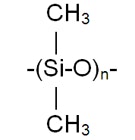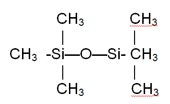Industry expert Tony O'Lenick explores: What is the difference between a cyclic silicone and a volatile silicone?
Silicone can exist in one of three types of structures: ring-like circular structures, straight chain silicone structures, and cross-linked silicone structures. Silicones can also be volatile or nonvolatile. Much confusion exists in the cosmetic industry because cyclomethicone (D4–D6) is both cyclic and volatile. This often leads to confusion in terminology.
A cyclic silicone refers to a structure of a compound that possesses a cyclical structure rather than the chain structures of dimethyl silicones. A cyclic silicone can be represented by the following structure:

If n = 4, the product is D4 (octamethylcyclotetrasiloxane ); if n = 5, decamethylcyclo-pentasiloxane. These are volatile. Higher values are nonvolatile. In fact, cyclic resins have recently been introduced.1
Volatile silicones relate to materials that have a low heat of vaporization and the ability to select a desired vapor pressure; they therefore evaporate from the skin quickly, providing a dry feel. They can be linear or cyclic. Low viscosity silicone fluids are volatile but not cyclic. An example is 0.65 viscosity silicone fluid, sometimes called MM.

In general, volatile and cyclic are two different concepts that are applied to molecules. There are cyclic silicones that are not volatile, there are volatile silicones that are cyclic, and there are materials that are both.
References
1. US Patent Application 20070196309










